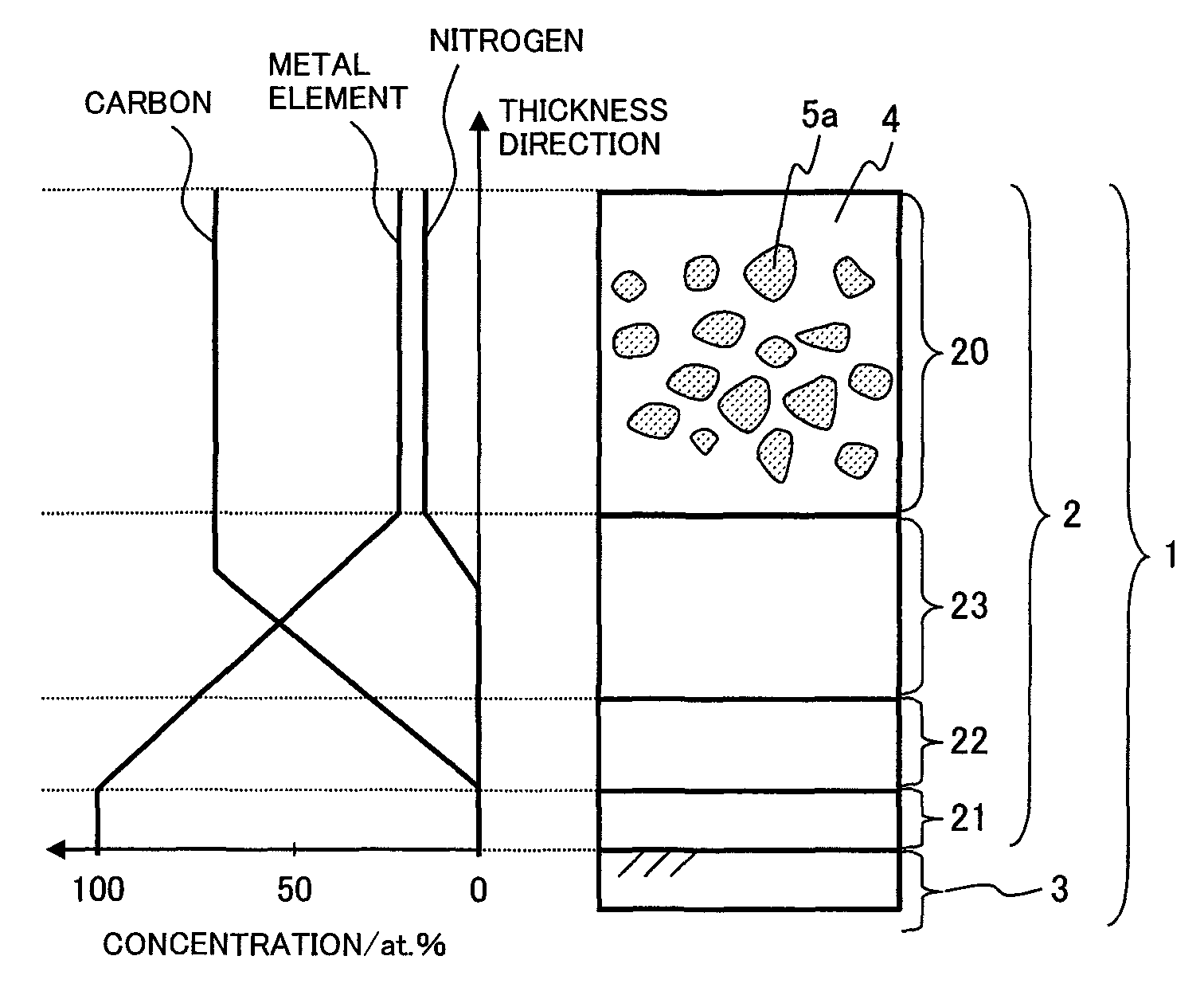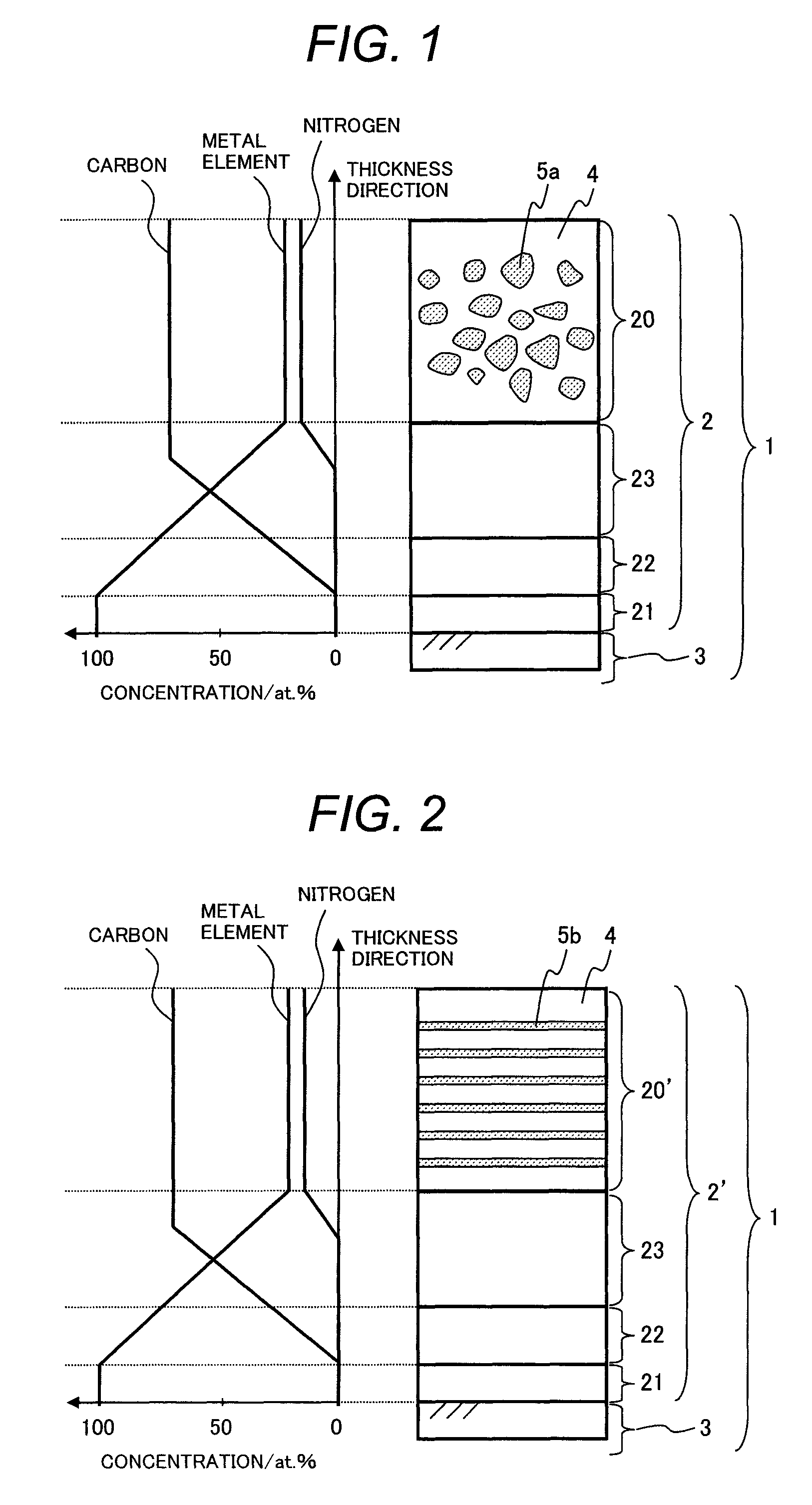Slide part
a technology of sliding parts and sliding joints, applied in the direction of liquid fuel engine components, rotary piston liquid engines, trunk pistons, etc., can solve the problems of amorphous carbon coating mechanical wear, amorphous carbon coatings can wear away significantly, and amorphous carbon coatings can be mechanically worn, so as to achieve superior high wear resistance and low frictional properties.
- Summary
- Abstract
- Description
- Claims
- Application Information
AI Technical Summary
Benefits of technology
Problems solved by technology
Method used
Image
Examples
preparation of example 1
[0089]The method for manufacturing a slide part specimen in Example 1 is as follows. A steel substrate, a metal target, and a graphite target were set in a non-equilibrium magnetron sputtering device, and argon gas, hydrocarbon gas, and nitrogen gas were supplied to form a hard protective layer on the surface of the steel substrate by the reactive sputtering method.
[0090]More specifically, first, the first interlayer 21 composed of only metal was formed by supplying argon gas and applying electric power to the metal target. Next, the second interlayer 22 composed of metal and the metal carbide and the third interlayer 23 composed of the metal carbide and amorphous carbon were formed by supplying argon gas and hydrocarbon gas while continually varying the amount of electric power applied to the metal target and the graphite target. Finally, the hard protective layer was formed by supplying argon gas, hydrocarbon gas, and nitrogen gas and applying electric power to the metal target an...
examples 17 to 24
Preparation and Evaluation of Examples 17 to 24 and Comparative Examples 19 to 22
[0123]The specimens in Examples 17 to 24 and Comparative Examples 19 to 22 were prepared by forming a hard coating on the surface of an actual automobile part by a manufacturing method similar to the above. In Examples 17 to 20 and Comparative Examples 19 and 20, a hard coating was formed on the top surface of a valve lifter in a motoring engine simulating a direct-acting valve system. In Examples 21 to 24 and Comparative Examples 21 and 22, a hard coating was formed on the surface of each vane in a vane oil pump. Endurance tests were conducted in an actual equipment using an engine oil containing Mo-DTC (viscosity index: 0 W-20) as a lubricant to evaluate durability. The results are shown in Table 3.
[0124]
TABLE 3ExampleExampleExampleExampleExampleExampleExample17181920212223Manufacturing methodReactiveReactiveReactiveReactiveReactiveReactiveReactivesputteringsputteringsputteringsputteringsputteringsput...
PUM
| Property | Measurement | Unit |
|---|---|---|
| particle size | aaaaa | aaaaa |
| vol. % | aaaaa | aaaaa |
| thickness | aaaaa | aaaaa |
Abstract
Description
Claims
Application Information
 Login to View More
Login to View More - R&D
- Intellectual Property
- Life Sciences
- Materials
- Tech Scout
- Unparalleled Data Quality
- Higher Quality Content
- 60% Fewer Hallucinations
Browse by: Latest US Patents, China's latest patents, Technical Efficacy Thesaurus, Application Domain, Technology Topic, Popular Technical Reports.
© 2025 PatSnap. All rights reserved.Legal|Privacy policy|Modern Slavery Act Transparency Statement|Sitemap|About US| Contact US: help@patsnap.com



